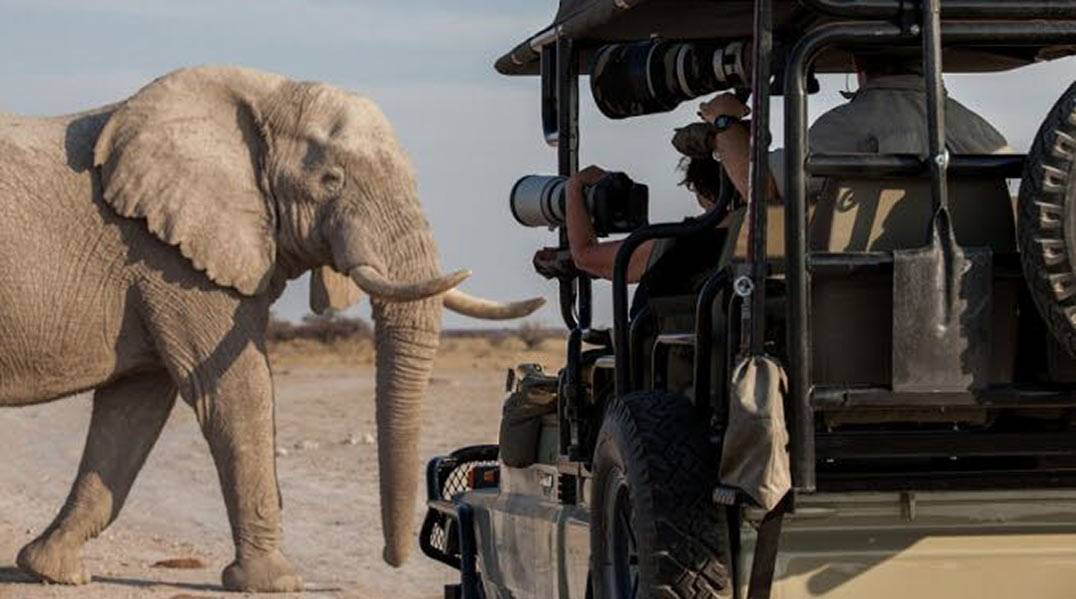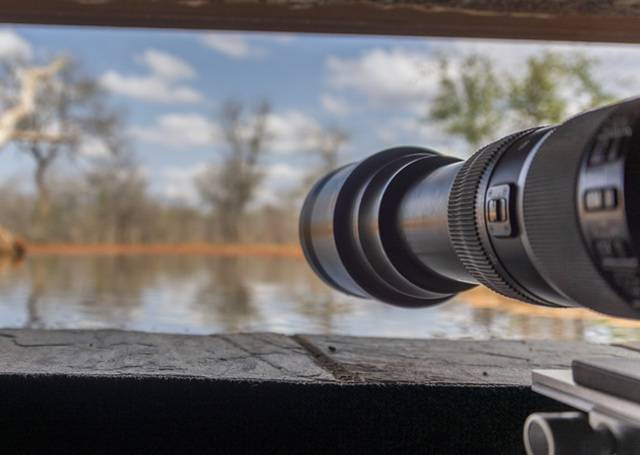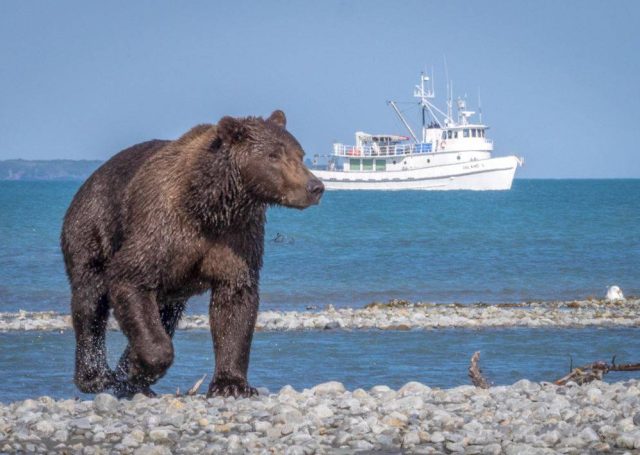What is a Photo Safari?
What is a Photography Safari - Some Answers
What is a photography Safari? As a professional wildlife photographer and nature guide here in South Africa, many of our safaris and tours I lead both here in South and Southern Africa and indeed internationally are marketed as ‘photo safaris’.
In this blog post I thought it would be helpful to answer some of these common questions, What happens on a photo safari? What’s different about a photo safari? What is the cost? Here I briefly explain what potential travellers can and should expect when booking a ‘photo safari’. For many a photo safari is a better option. So ‘what is a photography safari’? Hopefully I can give you some answers here.
Why go on this type of Safari?
Anyone who has been on a general wildlife safari will be aware of the conflict that sometimes exists on a game vehicle when you have different people wanting different things from their game drive.
In Southern Africa, some will be ‘first timer’s’ looking for the Big 5 animals, others will be peering through binoculars at fleeting birds trying to spot a “lifer” (once in a lifetime sighting) and others are tagging along interested in the snacks and sundowners (drinks) at the end of the game drive.
Then there’s the guide who finds him or herself desperately trying to cater to everyone’s needs and interests. They require not only an encyclopaedic knowledge of the bush but the peacekeeping skills of a UN envoy.
The word ‘photo’ and ‘safari’ have different and separate meanings but when combined give us as travellers a hint as to what one can expect when embarking on a photo safari.
As most photographers know the word photo or photography in its most basic of terms means painting or drawing with light. Safari on the other hand found its origins in the Middle East with the word ‘Safara’, meaning ‘a journey. So, safari can best be explained as a journey, expedition or investigation as normally stated, but in East Africa where it found its most popular term is safari.
So, it would be fair to say that a ‘Photo Safari’ is an adventurous journey or expedition during which people particularly explore or investigate opportunities to write with light, bringing the photographer closer to wildlife. (ie..Exploring Wildlife Photographic Opportunities)
What is the Difference between a Wildlife Safari and a Photo Safari?
We offer both Wildlife Safari’s and Photo Safaris in South and Southern Africa and we are also providing our clients with world class wildlife and photographic experiences in several countries outside the African continent. So, what is the difference between a Wildlife Safari and a Photo Safari?
Wildlife Safaris
The lines are somewhat blurred between the two, particularly in this digital photographic age. Generally, as described above, guests on wildlife safaris are led by a specialist wildlife guide and prefer to experience the flora and fauna as well as record such wildlife and birdlife experience’s using their mobile phones, cameras and video. Wildlife safaris are also generally larger parties or groups (6-10 persons) with a diversity of ages and interests sharing a single vehicle. Occasionally these maybe customised trips or built around singles, couples and family groups pursuing their own individual wildlife and nature interests.
Photo Safaris
Photos Safaris, however, are normally priced higher than the traditional wildlife safaris or tours as such safaris are tailored specifically for photographers. In many ways photo safaris provide better value, why?
Limited numbers usually between 4-6 persons, mean less congestion in safari vehicles. In this situation each photographer has optimum access in the vehicle (window seat). Alternatively, private access maybe given to certain parts of a game reserve not normally given to others, or perhaps access to a ‘hide’ specifically for photographers for example.
On the Boat
Boat photo safaris along the rivers and dams of Africa, are specialist photo safaris that should not be missed. Our boat photo safaris in Botswana provide guests with stunning opportunities to get shots from a very different perspective than one would normally expect to get.
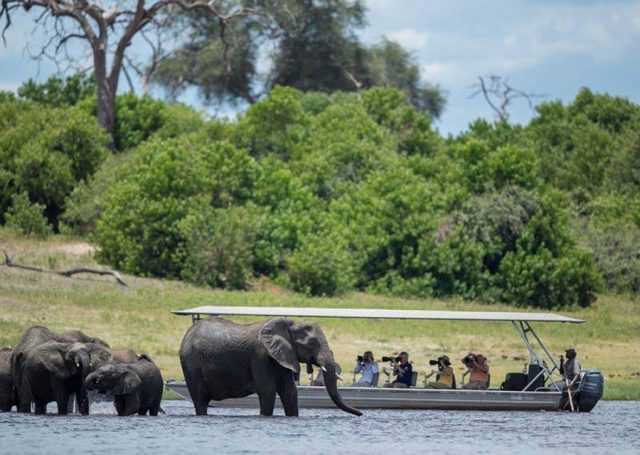
Slowly Slowly
Photo safaris generally also move at a much slower pace than wildlife safaris, allowing time for the photographers to get there shot and create chances to increase their own photographic portfolios. This often takes much more time and patience.
Also, photo safaris often operate outside of the ‘normal’ reserve’s operating times which is another plus. This is to allow optimal photographic opportunities for photographers. This could be very late evenings or very early mornings for ‘blue’ and ‘golden’ hour opportunities. Even during the hours of darkness, where the environment can take on a completely different photographic perspective and your professional can perhaps provide guests with some night safari photography tips.
Hands On
Photo safaris are very much hands on affairs, with instruction and photographic assistance to the guest photographer’s being paramount. The aim should be to improve their photographic technique and skills and hopefully send them away better wildlife photographers than when they arrived.
Post Editing
Photo safaris do not normally stop once the field photo sessions are over. Your photo guide professional will often continue the photo sessions in the ‘classroom’ with ‘post editing’ viewing and critiquing sessions for guests. This is an opportunity for ‘one to one’ viewing between the professional and guest also perhaps a time for correcting ‘settings’ and ‘modes’ for the next session in the field.
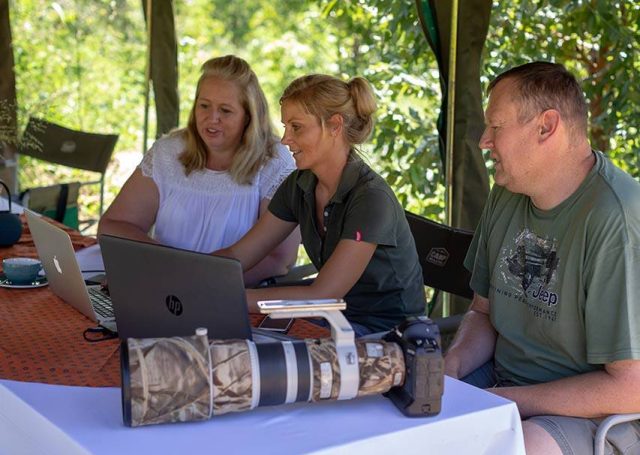
Similar Interests
It is also interesting for guests with similar photographic interests to be able to initiate conversations about technical details, as most people on photo tours are interested in elevating their photography. Photographers have different skill levels, styles and different ‘eyes’, thus photo tours make for good learning and sharing opportunities.
What to Look out for on a Photo Safari
One of the skills any wildlife professional photographer should possess, is one of ‘interpretation’ and anticipation. This ‘skill’ comes only with experience in the field but allows photo safari professionals an opportunity to try and alert new guest photographers to any animal intended behaviour, or an animal or birds next move. This ‘skill’ often results in some stunning photographs for the guests.
If this skilled if passed on correctly from the professional to the guest photographers, they can greatly enhance their future photography trips. Not only do guests get the benefit of learning about animal or bird behaviour but it also enables them to take better images in the future.
Not for Children
Photo safaris are unfortunately not normally a good fit for young children, due to their very nature but these safaris do certainly accommodate all photography skill levels. Photographers from absolute beginners to seasoned professionals are normally found on photo safaris all over the world. All of us can normally always ‘learn’ something from someone within the group.
How Much Does a Photographic Safari Cost?
Many factors dictate the actual cost of a photo safari, these range from your own personal travel costs and arrangements, the safari location, accommodation preferences, length of stay and of course the country in which the photo safari will take place.
Basically put, these photo tours can be categorised as budget accommodation, mid-range and luxury. Costs range from around $150 per person a day, to $3000 to $5000 or more for a week’s stay in a premier location and lodge accommodation.
Do Photo Safaris Only Take Place in Africa?
The short answer is no. The word ‘safari’ is of course synonymous with Africa and the ‘bucket list’ Big 5 safaris across the African plains and bush. Photo safaris in the Kruger National Park, South Africa. Big cat photo safaris, gorilla trekking in Uganda or a safari in Tanzania to witness the great wildebeest migration all stir one’s emotions and thoughts towards the continent of Africa.
Today it’s a little different, the truth is one of ‘semantics’, a quick look at Webster’s thesaurus says that a ‘safari’ may also mean a trip, tour or trek, amongst many other possible meanings. These are the words used to describe our own photo opportunities often outside of Africa. A photo tour to Alaska or Brazil’s Pantanal photo tour are all photo safaris we and no doubt others offer.
Conclusion
Any safari should provide you with a trip of a lifetime that ‘Bucket List’ tour you have always or often dreamed of. For the wildlife and nature enthusiast a photo safari should not be looked upon as a trip only for photography professionals but one for all those with a wish to improve their photographic skills and improve upon their own wildlife and nature photo portfolio. A photo safari should be an opportunity to learn new skills outside your current skill set, skills which can and will make you a better photographer and nature enthusiast. Whether you are a amateur snapper, keen hobbyist or professional you are sure to benefit from a photo safari.
Finally, we welcome spouses and partners of photographers, as all are welcome to come on any of our photo safaris. There is always so much to experience, learn and fun can surly be had by all, irrespective of whether you are interested in honing your photographic skills or just want to enjoy a wildlife experience.
- African Wildlife Photography Tips - February 23, 2020
- Low Light Wildlife Photography - November 26, 2019
- Bonamanzi Game Reserve - November 21, 2019
